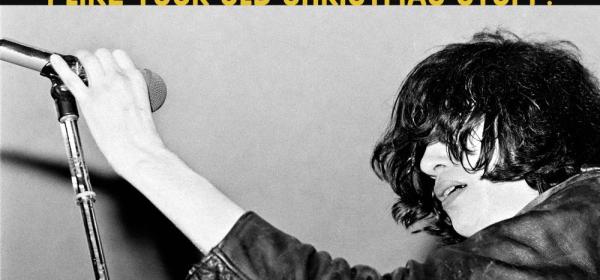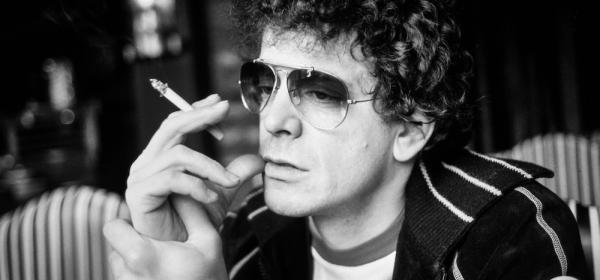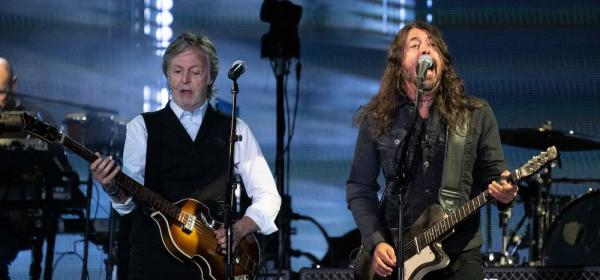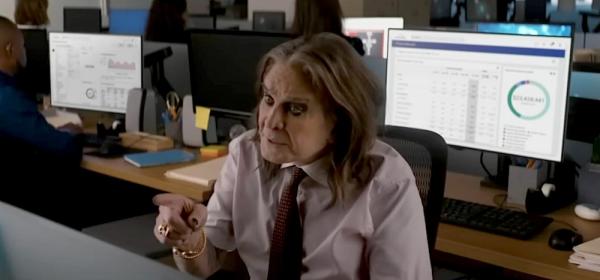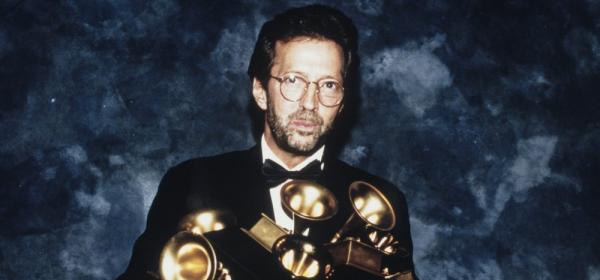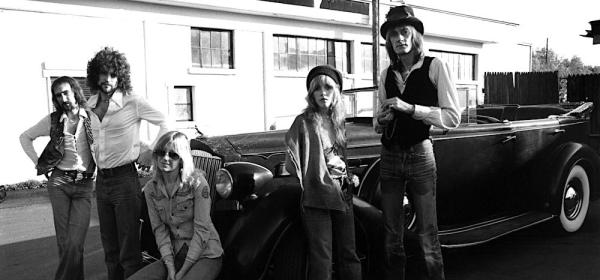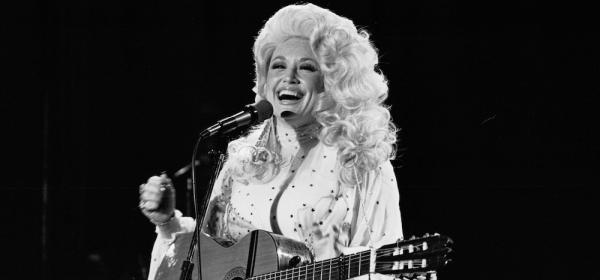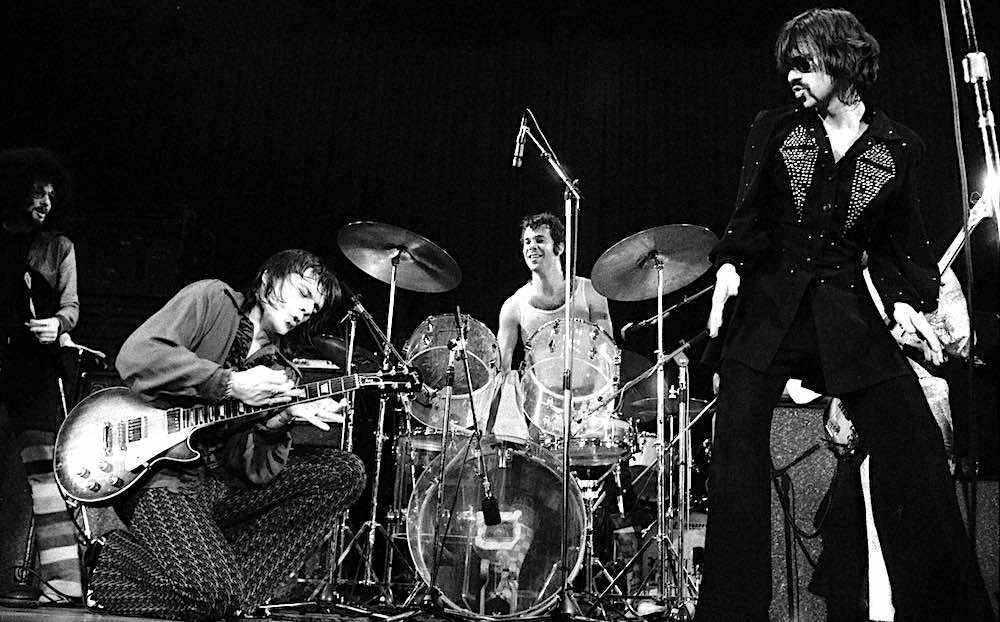
Before they became pop sensations with “Centrefold” in 1981, the J. Geils Band were almost something else entirely. In celebration of the 50th Anniversary of their lethal, switchblade-sharp self-titled debut album, ILYOS looks at the raucous early days of one of America’s great R&B bands.
It’s not that we don’t like “Centrefold.” It’s a great tune, funny in a smart and knowing kind of way, and Peter Wolf sings it like he looks in the video, sassy, and kinda punk in a ‘60s Mick Jagger wanna-be way. But the J. Geils Band’s later pop stuff obscures what they originally were. The band that guitarist J. Geils led and Peter Wolf fronted since 1967, spent the better part of their first decade as an untouchable Rhythm & Blues force. They made some great records and their live shows were incendiary. They even had a harp-player brilliantly named Magic Dick! They looked like they’d turned up for an audition for Martin Scorsese’s Mean Streets (a look that Bruce Springsteen & The E-Street Band later emulated, circa The River). They combined a wise-guy, give-a-f*ck directness that influenced punk and a deep love of American roots music that influenced contemporary and subsequent roots artists alike.
The J. Geils Band were from Boston, formed in 1967 by a bunch of local blues freaks led by guitarist John “J” Geils. Both Geils and singer Peter Wolf were New York-born. Geils had previously fronted an acoustic blues trio in the mid-60s featuring subsequent bandmates Magic Dick and bass player Danny Klein. Wolf had formerly fronted a band called the Hallucinations, who performed in Boston with everyone from the Velvet Underground to Howlin’ Wolf to Sun Ra. Wolf was also the local motormouth all-night blues DJ Woofa Goofa, and had befriended Van Morrison during Van’s time living in Cambridge, near Boston. They’d both had brushes with future genius; Geils had dated a young actress named Meryl Streep in the ‘60s, around the same time that Wolf was roommates with a budding filmmaker named David Lynch. Wolf would go onto marry actress Faye Dunaway at the peak of her popularity in the ‘70s.
The band rode the blues boom but played with an energy drawn more from ‘50s Rhythm & Blues than a lot of other blues bands. They became a hugely popular local draw by the start of the new decade and were opening for everyone from Johnny Winter to the Byrds to the Allman Brothers. Duly snapped up by Atlantic, which was still in touch with its R&B heritage, the band spent the next few years churning out albums and touring their arses off. While they had numerous mid-level hits, toured with the Rolling Stones, Rod Stewart and others, and sold a bunch of albums, they never really broke to the top tier and after a few years things tapered off. They left Atlantic and signed to EMI in 1978. It was with their second EMI album Love Stinks that their fortunes turned again in 1980 and with 1981’s Freezeframe and its first single “Centrefold,” that things went nuts for them.
But it’s their early years we’re celebrating here, and - despite Wolf’s motormouth stage raps – the J. Geils Band were a band who very much let the music do the talking, so in that spirit, we’ll tell you a bit more about them with the aid of a handful of critical tracks.
“Hard Drivin’ Man”
Released the same year and on the same label and featuring a similar monochromatic look and sound to the MC5’s influential Back In the USA album, the self-titled first J. Geils Band took high energy R&B into the ‘70s and impacted beyond its relatively modest sales. A look and a listen to early Dr Feelgood is proof enough of that. Clocking in at just over 2 minutes, “Hard Drivin’ Man” is hard and direct and pricked the ears of several streetwise young rockers and punks a few years later; Thin Lizzy were playing it in ’74, around the same time it was a live staple for Deniz Tek’s pre-Radio Birdman band, TV Jones. Most significantly, Eddie & The Hot Rods, the band that bridged pub rock and punk rock in the UK, opened their wildly successful 1977 Live At the Sound of Speed with a ripping version of it.
“Serves You Right To Suffer”
A rare Geils Band stab at hard blues, and the greatest white John Lee Hooker cover until George Thorogood’s similarly lean and mean “One Bourbon, One Scotch, One Beer” appeared in ’77. Interestingly both the J. Geils Band and Thorogood made a name for themselves on the thriving Mid-Atlantic/New England blues scene.
“Home Work”
A third highlight from that first album, this cover of Otis Rush’s snappy 1962 faux-teen blues showed the way for a range of punky ‘70s R&B outfits, from Dr Feelgood, the Count Bishops and the Inmates in London to The Senders in New York.
“Cry One More Time”
1971’s The Morning After took up where the first album left off, albeit with the introduction of some warmer, more soulful sounds. “Cry One More Time” was a tremendous mid-tempo number inspired by the great Don Convay and showed enough quality in the songwriting department that ex-Byrds and Flying Burrito Brothers singer-songwriter and country-rock pioneer Gram Parsons, whose vision of “Cosmic American Music” took in not only country but blues and soul and much more, chose to cover it for his first solo album, GP, in 1973. (Oddly enough, Parsons had his guitarist, Barry Tashian, sing it; Tashian previously led ‘60s Boston legends the Remains and definitely would’ve known the Geils guys.)
“Looking For A Love”
The smash from the second album, and a great example of how the band could shape material its own end. The original by Bobby Womack’s early ‘60s band the Valentinos is great, but the Geils version is something different entirely, a simply unstoppable power-gliding dancefloor smasher! Of course, there is also a version of the third J. Geils Band album, the overheated live classic Full House, alongside...
“First I Look At The Purse”
As mentioned, the band followed up their first two studio albums with the live Full House, which most people who dig this sort of stuff reckon is one of the hottest live albums ever recorded. It opens with a version of the early Motown hit by the Contours, “First I Look At The Purse,” which had been the first single taken off the first album a couple of years earlier, and which, with its irresistible drive and humour, sets the tone for a riot of a record. “If the purse is fat, that’s where it’s at – googamooga!” Indeed!
“Struttin’ With My Baby”
The heat generated by the live album primed the group for a breakthrough, and their next album, Bloodshot, saw them reach #10 on the Billboard Album Charts for the first time. “Struttin’ With My Baby” is another sensational original in the same vein as the early stuff, but the band was continuing to diversify somewhat as our next selection shall reveal.
“Give It To Me”
Reggae was still new in 1973 as far as America went – Bob Marley & The Wailers did a run of shows at the tiny Max’s Kansas City in New York that year - but it was something that quite a few fans of R&B and soul were quick to latch onto – it shared these same roots after all. The Stones, of course, would soon dabbled, and by 1975, Patti Smith was cutting songs like “Redondo Beach” and then the whole UK punk thing – in particular the Clash and their followers – incorporated reggae into what they were doing. But the J. Geils Band were one of the first to try, and “Give It to Me”, from Bloodshot, was perhaps the first time many people heard the reggae rhythm and lilt when it became the band’s first single to reach the Top 30 in 1973.
“Must’ve Got Lost”
The J. Geils Band’s first Australian chart entry was the studio version of this tune, which reached #72 in Australia in ’75. It’s another excellent soul/R&B tune with pop overtones and originally appeared on 1974’s Nightmares... And Other Tales From The Vinyl Jungle, but the version here is from the subsequent live album (their second), entitled Blow Your Face Out (after the particular instruction Wolf would yell at Magic Dick when he wanted him to really blow his harp!) and features Wolf reverting to his Woofa Goofa persona for the insane rap at the beginning which is too good not to share.
We’ll leave with you with a rockin’ live clip from 1972. If you’re digging all this, you can enjoy the complete pleasures of the J. Geils Band’s first five albums below – Turn it up, and blow your face out!
Listen to J. Geils Band on Spotify:
Listen to J. Geils Band on Apple Music:


